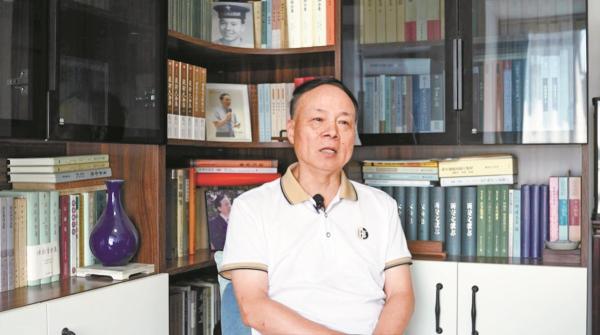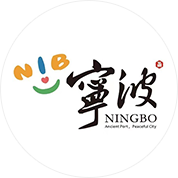Core Ideas
The spread of Yangming culture to Japan and the Korean Peninsula was built upon the foundation of East Asian cultural exchanges during the Tang and Song dynasties. Ningbo, as an important port city, has always been at the forefront of cultural exchange.
After the Yangming culture was introduced to Japan and the Korean Peninsula, it went through varying degrees of localization, forming multiple centers. The localized versions of Yangming philosophy still hold practical value for contemporary applications.
In the face of the current Yangming culture boom, we must remain calm and thorough. The difference in the popularity of Yangming studies at home and abroad reminds us that the rational dissemination of traditional culture is more conducive to cultural confidence.

Qian Ming — Researcher at the Zhejiang Academy of Social Sciences, former director of the East Asia Yangming Research Institute at Zhejiang Gongshang University, standing council member of the Chinese Confucius Society, and vice president of the Yangming Studies Research Association.
Reporter: We welcome you to tomorrow’s “Eastward Spread of Yangming Culture” symposium hosted by the Ningbo Cultural Tourism Research Institute. You have mentioned before that the overseas spread of Yangming culture is fundamentally different from its development within China. In Japan and on the Korean Peninsula, Yangming studies primarily developed through text interpretation and self-digestion, rather than the traditional teacher–student transmission and didactic instruction. In your view, what cultural exchange background supported the eastward spread of Yangming culture to Japan and the Korean Peninsula? And what role did Ningbo play in this process?
Qian Ming: Since the Tang and Song dynasties, China’s exchanges with Japan and the Korean Peninsula have become increasingly close, laying the groundwork for the spread of Yangming culture.
From a broad geographical perspective, East Asian cultural exchanges followed two main routes: a northern route and a southern route. Northern China mainly used the northern route, extending from the Liaodong Peninsula and the Korean Peninsula to the Japanese archipelago. The southern route relied on maritime transport to the east, linking China and the Japanese archipelago. In this process, port cities became key hubs for cultural exchange.
During the Tang and Song dynasties, the southern route—starting from ports such as Mingzhou (present-day Ningbo) and Ciquan (present-day Quanzhou)—grew increasingly prosperous. Large numbers of kentōshi (Japanese envoys to Tang China) and “student monks” crossed the East China Sea to learn Chinese culture and technology. The entire East Asian cultural sphere saw frequent exchanges in Buddhism, Daoism, architecture, art, literature, music, fine arts, and even tea culture. Yangming studies were just one of many elements in these exchanges, and they arrived later, after Buddhism, Confucianism, and Neo-Confucianism (Zhu Xi’s school).
By the Ming dynasty, the northern route had gradually declined, while maritime transport along the southern route flourished. Ningbo, as a key port on the southern route, naturally became a cultural exchange frontier.
After reaching other East Asian countries, Yangming studies in Japan and on the Korean Peninsula, displayed greater independence and subjectivity. This was because China’s traditional educational model—which emphasized face-to-face teaching, personal realization, and moral influence—was hard to replicate abroad. The works of Wang Yangming and his disciples were almost the only way Japanese scholars accessed Yangming culture. On the Korean Peninsula, although some scholars had contact with Chinese Yangming scholars, no direct master–disciple lineages formed.
Given this cultural exchange background, we believe Yangming studies cannot simply be placed into a single “cultural sphere.” A “multi-center” perspective is the only reasonable choice.
Reporter: Since you believe that Yangming studies developed differently in China, Japan, and the Korean Peninsula, could you briefly introduce the unique Yangming schools formed in Japan and Korea during their eastward spread? What inspiration can they offer us?
Qian Ming: In Japan, after Wang Yangming’s works were introduced, they were quickly Japanised and popularised through interpretation and annotation. Because the Japanese tend to favour concrete and practical thinking, which resonated with Yangming studies’ emphasis on shi (practice and practicality), they were able to apply Yangming culture in politics, economics, education, and more.
For example, in Japan’s economic and commercial activities, Yangming culture had a significant influence. The late Japanese business leader Inamori Kazuo, known as the “Saint of Management,” was deeply influenced by Yangming studies. His entrepreneurial philosophy skillfully combined Chinese Confucian culture with Yangming culture. Inamori’s ideas have been highly regarded in China and have become an important source of inspiration for many entrepreneurs.
On the Korean Peninsula, the biggest feature of Yangming studies was that it always operated within the discourse framework of Neo-Confucianism (Zhu Xi’s school). Because Zhu Xi’s school was so dominant in Korea, Yangming studies had to develop “underground,” under its shadow. As a result, Korean Yangming studies focused on i-li (principle) metaphysical debates rooted in Neo-Confucianism, rather than the introspective self-cultivation emphasis of Chinese Yangming studies, or the practical emphasis of Japanese Yangming studies.
In recent years, China has seen a positive trend in which discussions of Yangming culture have expanded beyond academia. At the societal level, some reading clubs, workshops, and private academies have integrated Yangming culture with solving real-world social issues and promoting business development. This shows the vitality and applicability of Yangming culture in modern society, offering us deep, practical insights.
Reporter: Ningbo, as one of the important starting points for the eastward spread of Yangming culture, is also the hometown of Wang Yangming and an important bearer of his spiritual legacy. How should we further continue and enhance Ningbo’s unique role in Yangming culture research? And how should we dialectically view and reflect on Yangming culture?
Qian Ming: I have two suggestions for Ningbo.
First, Yangming culture does not exist in isolation. Its eastward spread was a comprehensive reflection of the era’s intellectual and cultural exchanges. Literature, art, calligraphy, architecture, and tea culture all share intricate connections with Yangming culture. Therefore, we should take an integrated approach to studying and promoting Yangming culture, placing it in a broader historical and cultural context to excavate and present its value.
Second, as Yangming culture gains popularity, we must maintain a calm mindset. If we merely chase trends, we risk grasping only the superficial, learning only appearances, and slipping into vulgarization or dogmatism, losing the true spiritual essence and contemporary significance of Yangming culture.
In recent exchange activities, one phenomenon stands out: Yangming studies has gradually lost its former popularity in neighbouring countries and regions, while its influence within China has continued to grow. This is related to the rapid rise of China’s national strength.
This also reminds us: to tell China’s story well and spread Chinese culture effectively, we must reflect seriously based on historical experience. Avoid self-entertainment; approach Yangming culture with rationality. This will better contribute to cultural confidence.
Source: cnnb.com.cn
Reporter: Zhang Xinrui
Editor: Ye Ke



